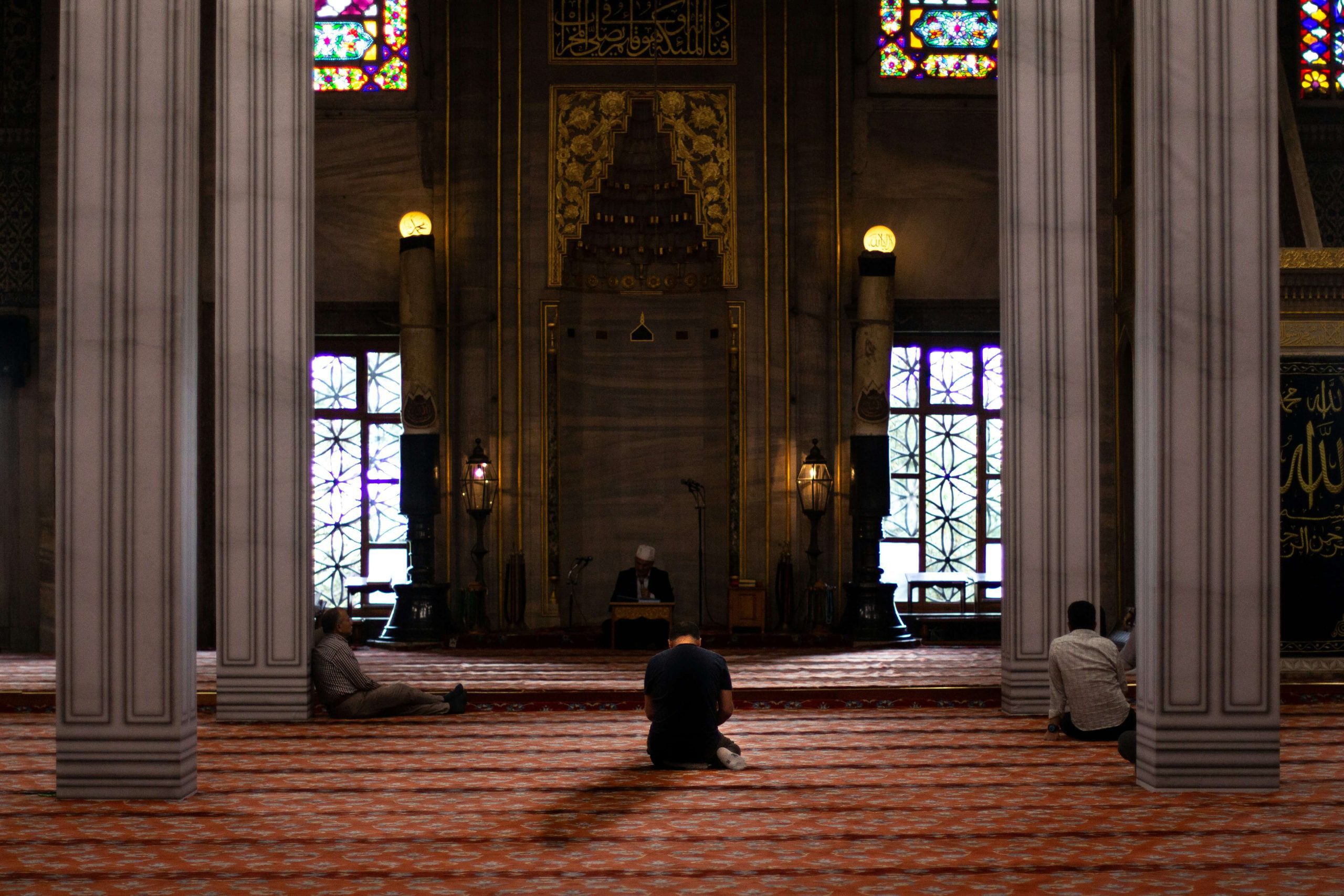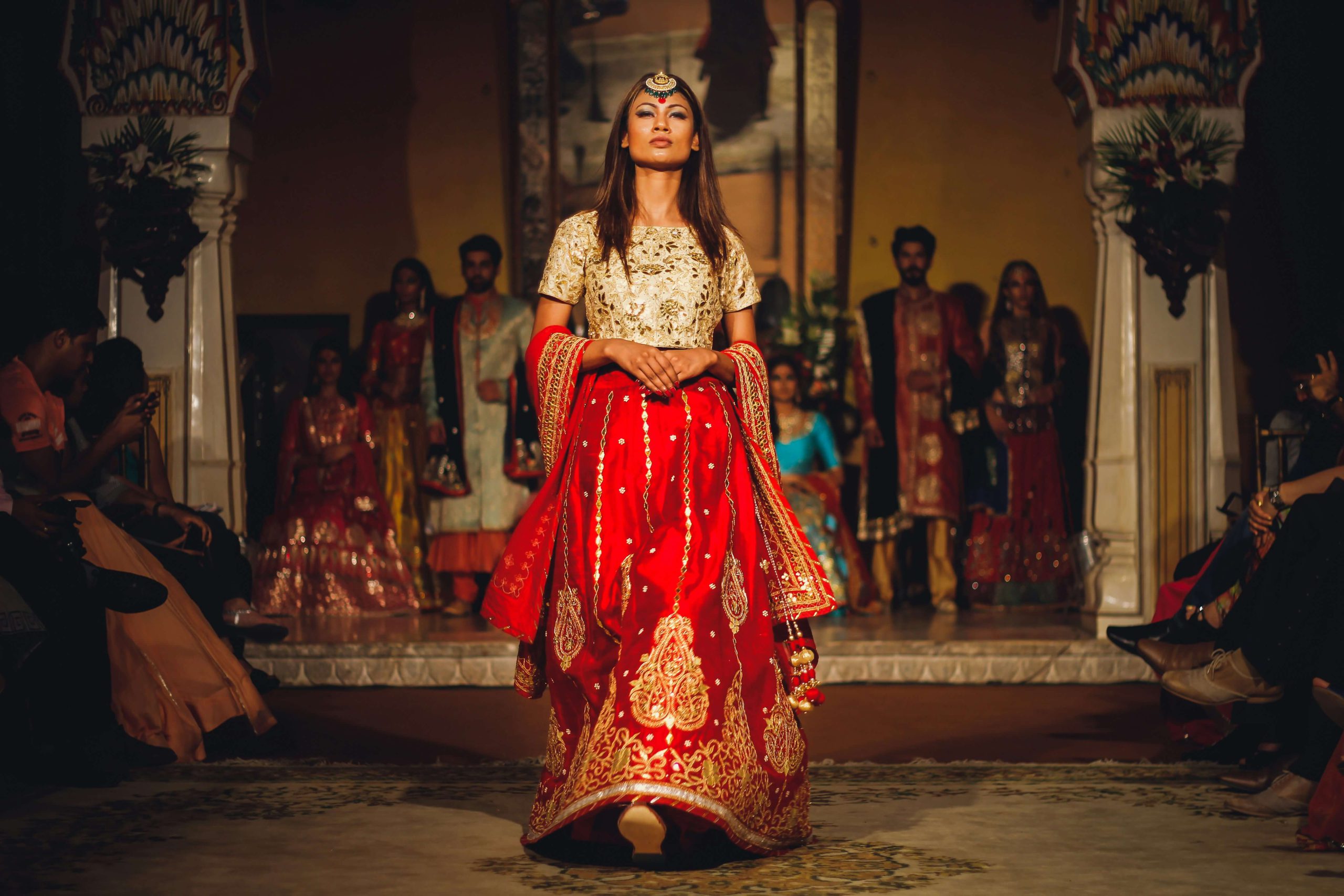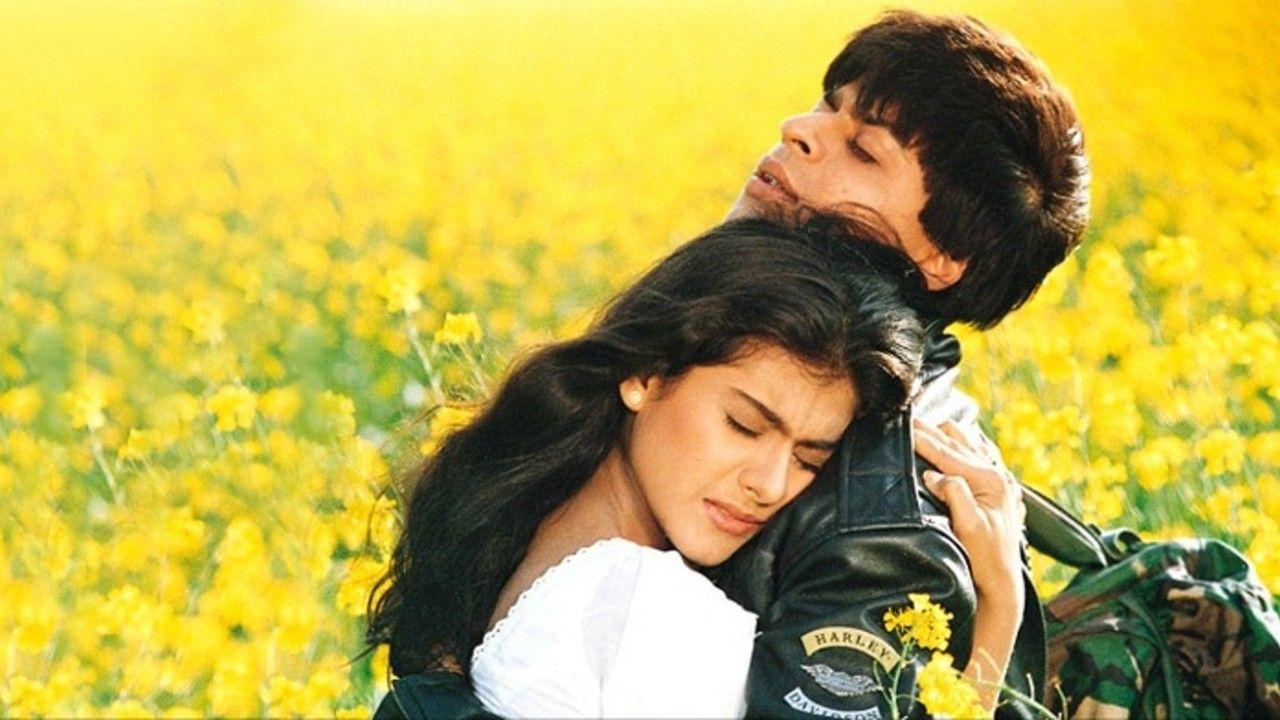1.1 The Evolution of the Romantic Hero Archetype in Bollywood
The romantic hero archetype in Bollywood has undergone significant transformation over the decades, evolving with social expectations, cultural shifts, and global influences. From the early portrayals of a lover in post-independence films, which often emphasized sacrifice and unrequited love, to the more flamboyant and assertive characters of the ’70s and ’80s, epitomized by actors like Rajesh Khanna and Amitabh Bachchan, Bollywood’s romantic heroes have been instrumental in reflecting and shaping societal perceptions of masculinity and romance (Dwyer, 2000). It was in this milieu of changing cinematic landscapes that Shah Rukh Khan, commonly referred to as “King Khan,” emerged in the early ’90s, carving out a unique niche for himself and redefining what it meant to be a romantic lead in Indian cinema.
Shah Rukh Khan’s ascent coincided with liberalization in India, both economically and culturally, allowing for a broader exploration of love and relationships on screen (Ganti, 2004). His characters often broke from tradition, portraying a new kind of hero who was not only passionate but also vulnerable and sensitive, thus challenging the conventional rugged masculinity previously dominant in Bollywood. Films such as “Dilwale Dulhania Le Jayenge” (DDLJ) in 1995, directed by Aditya Chopra, presented Khan as an NRI (Non-Resident Indian) who seamlessly blended Indian traditional values with a modern, more international persona. This nuanced presentation of a romantic hero who respects family values while also pursuing individual love carved out a template for many films to come.
Researchers like Tejaswini Ganti have proposed that the appeal of Shah Rukh Khan’s characters lies in their ability to simultaneously uphold and subvert traditional values. His portrayals bridged the gap between conservative family-oriented themes and the emerging aspirations of a modern India straddling both global ideologies and local sensibilities (Ganti, 2004). This duality in his characters was a departure from the one-dimensional leads of earlier eras, and it allowed audiences to reimagine and negotiate their own romantic fantasies through a more accessible and relatable lens.
Critical theory around star personas in film studies further explains this phenomenon. Richard Dyer’s (1986) concept of a star’s image consisting of both their on-screen personas and off-screen personalities has been instrumental in understanding the impact of actors like Shah Rukh Khan. He typically portrayed approachable next-door characters who deal with love in playful yet earnest ways, influencing the audience’s perception through a blend of his on-camera roles and the widely adored off-screen personality.
Moreover, the evolving cinematic techniques also contributed to Shah Rukh Khan’s romantic hero image. The use of song sequences, exotic locales, and intertextuality in movies like “Kuch Kuch Hota Hai” (1998) expanded the narrative power of romance and allowed the audience to engage in a hyperreal experience of love and relationships that was both aspirational and escapist (Kabir, 2001). These landmark films, often set against global backdrops, highlighted a more cosmopolitan and malleable version of the romantic hero, signaling a departure from the more traditional settings of earlier Bollywood romances.
The evolution of the romantic hero in Bollywood, marked significantly by Shah Rukh Khan’s filmography, reflects broader societal trends and changing attitudes towards love, relationships, and gender roles in India. The archetype’s metamorphosis from the early portrayals by actors like Dev Anand and Dilip Kumar to the more dynamic and complex figures essayed by Khan mirrors the country’s journey through modernity and its negotiation with cultural globalisation.
1.2 Shah Rukh Khan’s Contribution to the Romantic Hero Paradigm
Shah Rukh Khan, also known as “King Khan,” has been a monumental figure in Bollywood for more than two decades, embodying the very essence of the romantic hero. His contribution to the archetype of the romantic lead in Indian cinema cannot be overstated. Positioned amidst the rich tapestry of Bollywood’s historical narratives of love and relationships, Khan’s interpretation of romantic roles illuminates evolving sensibilities and the complexity of love’s portrayal on-screen.
Khan’s portrayal of romantic heroes, often characterized by a blend of intensity and tenderness, challenges and redefines traditional Indian notions of masculinity. In films such as “Dilwale Dulhania Le Jayenge” (1995), he introduced a paradoxical hero, both rebelliously charismatic and respectful of cultural values, carving a niche that resonated deeply with audiences both in India and the diaspora (Chopra, 2007). His performance in “Kuch Kuch Hota Hai” (1998) illustrated an individual capable of balancing friendship and romantic love, influencing the narrative on the significance of companionship as a foundation for romantic relationships (Ganti, 2004).
Khan’s embodiment of modern love has not only shaped the characterization of men in Bollywood but also has significantly influenced societal norms and expectations surrounding romance. His role in “Veer-Zaara” (2004) pushes the boundaries of cross-border love stories, advocating for a “love without boundaries” ethos that interrogates and traverses political and cultural divides. Scholars argue that Khan’s roles have often mirrored contemporary social issues, fostering a dialogue and re-examination of the concept of love in a rapidly globalizing India (Dudrah, 2006).
The actor’s extensive filmography, notably in romantic dramas, illustrates an ongoing narrative that has adapted to changing societal values. In “Jab Tak Hai Jaan” (2012), Khan juxtaposes the portrayal of an impassioned lover with the grit of a disciplined military officer, crafting a multi-dimensional character that speaks to the evolving complexities of gender roles and relationships (Kabir, 2013). His characters often personify aspirational qualities, weaving romance with personal growth and resilience, further endearing him to his audience and reinforcing aspirational romantic ideals.
His charismatic on-screen presence has also been instrumental in exporting Indian cultural values globally. Films starring Shah Rukh Khan have popularized Indian culture and romantic ideals, creating a transnational appeal for Bollywood’s love stories (Kavoori, 2008). Through his performances, Khan has been instrumental in identifying a transcultural identity for love that crosses Indian and international boundaries, influencing perceptions of Indian romance globally.
In summary, Shah Rukh Khan’s nuanced portrayals have redefined the romantic hero archetype in Bollywood. His characters often manifest a modern sensitivity, integrating traditional cultural values with contemporary attitudes toward love and relationships. Khan’s ability to channel the complexities of love through a charismatic and relatable screen persona has indeed crafted a lasting impact on the portrayal of romance in Indian cinema, and consequently, the societal perceptions surrounding it.
2.1. The role of Bollywood in shaping societal norms on romance
Bollywood has long been the powerhouse of Indian popular culture, wielding vast influence over the societal norms, including perceptions of romance and love (Ganti, 2012). Films are not merely for entertainment; they inevitably serve as cultural texts that reflect and shape the beliefs and behaviors of society. To understand the profound impact of Bollywood on societal norms regarding romance, one must consider its pervasive reach and emotive storytelling, which often centers around romantic plots that touch the hearts of millions.
Bollywood’s depiction of love traditionally involves a mix of aspirational ideals and cultural traditions, playing a significant role in normalizing certain behaviors and attitudes towards relationships. For instance, Bollywood’s representation of courtship has popularized the concept of grand, expressive gestures of love and the pursuit of love despite societal barriers (Dwyer, 2006). It has shaped a collective notion of romantic destiny, which adheres to the belief that true love is preordained and encounters several trials before triumphing.
Moreover, the film industry’s portrayal of romance has seen shifts that correspond to India’s changing societal values. During the early years, Bollywood emphasized traditional roles within courtship and marriage. However, more recent films have begun to challenge these conventions by showcasing more independent and assertive female characters and a focus on mutual consent and emotional connectivity in relationships (Kapur, 2009).
Shah Rukh Khan, often dubbed “The King of Romance,” plays a pivotal part in this cultural dialogue. His characters typically embody a blend of modern and traditional values, resonating with both younger and older generations. Khan’s portrayals infuse romance with respect and dignity, elevating love as something sacred and pure – an aspirational form that often contrasts with the more complicated and sometimes harsh realities of actual relationships (Rajagopal, 2001).
Through his various iconic roles, SRK has also been influential in defining the concept of masculinity in love. His characters often exhibit vulnerability, a stark contrast from the traditionally stoic and domineering male protagonists of the past. This has contributed to a shift in societal expectations, where men are increasingly accepted to be openly romantic and emotional (Mubarak, 2013).
The sincerity and intensity that SRK brings to his romantic roles often blur the line between the actor and the characters he portrays. For many, the ideal partner is reflective of the virtues Khan embodies on-screen – charismatic, passionate, and unwaveringly devoted. This, in turn, affects societal perceptions of what constitutes a desirable companion in contemporary Indian society.
In summary, Bollywood, particularly through the persona of Shah Rukh Khan, has undeniably influenced societal norms regarding romance in India. The genre’s capacity to dictate cultural norms can both preserve and revolutionize the way love is perceived and enacted. Bollywood’s narratives of romance have propagated an idealized vision of love, which continues to shape the dreams, aspirations, and behaviors related to romantic relationships in India.
2.2. Analysis of Shah Rukh Khan’s Influence on Cultural Concepts of Love
Shah Rukh Khan, popularly known as “King Khan” in the Indian film industry, has been instrumental in shaping the cultural concepts of love and romance in India through his extensive body of work in Bollywood cinema. His portrayals have not only captivated audiences but also played a pivotal role in constructing and reinforcing societal perceptions of romantic relationships. Shah Rukh Khan, through his characters, brings to the screen a combination of passion, vulnerability, and charisma, which has helped to establish a modern blueprint for love that resonates deeply with the Indian audience (Kasbekar, 2006).
The influence of Khan’s depiction of romantic heroes can be seen in how young Indians perceive courtship and express emotions. The characters he plays often reflect a sort of idealism that tends to valorize persistence, grand gestures, and emotional intensity as hallmarks of true love. These characteristics have insinuated themselves into the cultural fabric, impacting the expectations that individuals harbor towards relationships (Dudrah, 2006). For instance, the portrayal of Raj in “Dilwale Dulhania Le Jayenge” has become synonymous with the ultimate lover – respectful yet rebellious, traditional yet modern – which many young people idolize as the epitome of the perfect partner (Ganti, 2012).
Furthermore, Shah Rukh Khan’s films have a recurring theme where love transcends societal norms and barriers. This theme challenges the traditionalist viewpoint, offering a more liberal stance on relationships, especially in a diverse society like India where arranged marriages are still prevalent. On the contrary, his films often promote the idea of love marriages, which has led to an increase in their acceptance among Indian youth (Desai, 2015). Consequently, his portrayal has not only popularized certain romantic ideals but has also subtly propelled the evolution of social norms regarding mate selection and marriage.
Despite the positive adoration for Shah Rukh Khan’s romantic characters, some critics argue that these portrayals create unrealistic expectations of love, leading to dissatisfaction in real-life relationships. His on-screen romances often showcase an idealistic world devoid of the mundane challenges that real couples face (Majumdar, 2009). This has sparked a debate on whether such portrayals are healthy for audiences, as some might seek to emulate the perfection seen in movies, only to be disenchanted by the complexities of authentic human connections.
However, the cinema of Shah Rukh Khan does more than just depict a fairy-tale version of romance. It often intertwines with social issues, representing love as a transformative power capable of overcoming obstacles. Movies like “Swades” and “Chak De! India” portray love for the community and nation, expanding the narrative on love beyond just romantic relationships (Chopra, 2007). His roles in such films strive to communicate a broader, more inclusive notion of love, infusing it with patriotism and social responsibility.
The cultural impact of this beloved actor’s portrayal of love is thus multifaceted. While primarily reinforcing ardent romance, his characters also contribute to a broader conversation about love’s power to cross boundaries – social, cultural, or otherwise. In his journey as the quintessential romantic hero of Bollywood, Shah Rukh Khan has not merely entertained but also invited his audience to dream and aspire within the realm of love and relationships, influencing real-world attitudes and behaviors towards these ideals.
3.1. The effect of on-screen romance on audience expectations of relationships
Bollywood has been a prolific force in shaping the cultural tapestry of India, particularly in matters of love and relationships. Shah Rukh Khan, often referred to as the “King of Romance,” has played an instrumental role in defining and influencing audience expectations of love through his on-screen portrayals. His films are known not just for their box office success but also for their enduring impact on Indian society.
Khan’s characters often embody an idealistic and passionate lover, someone who is willing to go to great lengths for the object of his affection. This portrayal has affected the way love is perceived within the society, especially among the younger generations. His films present a fantasy of love that is characterized by grand gestures, unwavering devotion, and happy endings, thereby establishing high benchmarks for real-life romantic relationships (Ganti, 2012). These expectations, which resonate through dialogues and songs, have found their way into the minds and hearts of Indian audiences.
The influence of Khan’s romantic roles extends beyond the narrative and has been observed in how individuals approach relationships. Studies have suggested that media consumption, particularly of romantic dramas, can influence relational expectations and beliefs about love (Sensarma & Bhatia, 2020). Khan’s portrayals often exhibit a persistence in pursuit of love, which could translate into a belief that perseverance is key to winning a partner’s affection. However, this could also inadvertently promote an unrealistic view of consent, as some of his characters do not take an initial ‘no’ from their love interest as final (Talwar, 2017).
The trend toward idealized love on-screen can have tangible effects on demographic segments, such as adolescents and young adults, who are at a stage of developing their conceptions of romantic relationships. Bollywood’s portrayal of love can create a sense of dissatisfaction with the mundane aspects of real relationships, leading to an undervaluing of stability and mutual respect, which are foundational to long-lasting partnerships. Cultivation theory proposes that long-term exposure to television content can shape audience perceptions, suggesting that individuals who watch a significant amount of Bollywood romance may begin to expect their relationships to mirror the extravagant narratives depicted on screen (Morgan & Shanahan, 2010).
Moreover, the widespread popularity of Shah Rukh Khan’s films provides an extensive reference point for cultural practices related to courtship. From RJPD’s design of weddings and romantic gestures to the use of film dialogues in real-life wooing scenarios, the ‘SRK effect’ has pervaded the Indian ethos. The cultural framework of love has been, to a considerable extent, transformed by the celluloid dreams woven by Khan and the larger Bollywood industry.
Yet, it’s worth noting the evolving audience that is becoming increasingly aware of the separation between reel and real-life love scenarios. Critics and scholars argue that while a significant portion of the audience might internalize these movie scenarios, a growing number exercise critical thinking and recognize the performative nature of on-screen romance.
In conclusion, Shah Rukh Khan’s roles have been more than just entertainment; they have been instrumental in setting expectations and ideals of love for a significant portion of Indian society. As Bollywood embraces a more diverse and realistic portrayal of love, it will be intriguing to follow how the impressions left by Khan’s characters evolve and influence or contrast with the tastes of a changing audience.
3.2 Critical reception and adaptations of Shah Rukh Khan’s portrayal in real-life attitudes
Shah Rukh Khan, often called the “King of Romance” of Indian cinema, has had a substantial impact on the way relationships and love are perceived by contemporary Indian society. His characters often embody a blend of traditional values and modern sensibilities, which has led to a unique form of romantic hero that resonates deeply with audiences. This subchapter will delve into how the critical reception of Khan’s portrayal of romantic heroes has influenced real-life attitudes toward relationships in India.
Khan’s portrayal of romance has often been characterized by intense passion, unwavering love, and grand gestures, elements that have been critiqued for setting unrealistic relationship expectations. Researchers like Datta (2018) have explored how Bollywood romances create hyper-idealized scenarios that can affect young viewers who may begin to expect similar circumstances and declarations of love in their lives. Reflecting on the nuances of Shah Rukh Khan’s on-screen love stories, one can unveil how these narratives have become a benchmark for romance, occasionally blurring the line between reel and real life for devoted fans.
Furthermore, Shah Rukh Khan has also been instrumental in the nuanced portrayal of love, one that encompasses the joys and also the sorrows. Gopinath (2016) discusses this as a double-edged sword where such portrayals have helped in normalizing open emotional expression amongst Indian men, challenging stoic masculine stereotypes prevalent in the culture. However, there is also a critique that emphasizes the potential reinforcement of gender stereotypes, where the male lead’s relentless pursuit often blurs consent, leading to problematic adaptations in relationship behavior outside cinema.
In addition to this, the critical reception of Khan’s movies reveals an evolving audience that is starting to demand more grounded and realistic portrayals of relationships. The changing social fabric of India, influenced by globalization and the rise of digital media, is reflected in the appetite for content that is relatable and portrays the complexities of modern relationships. Scholars like Mishra (2021) have indicated a growing trend in film criticism that questions the traditional tropes of love as depicted in Khan’s early films, such as the damsel in distress or love at first sight, urging for more progressive and egalitarian narratives.
Khan’s influence goes beyond his cinematic presence; it extends to his off-screen persona, which has shaped public attitudes toward love and marriage. Despite playing larger-than-life characters on-screen, Khan’s real-life representation as a loving husband and a family man has contributed to a holistic image that fans aspire to emulate (Mehta, 2019). This duality between his filmic characters and his personal life has produced a composite romantic ideal that impacts societal norms and expectations.
In conclusion, while Shah Rukh Khan’s cinematic legacy as a romantic hero remains undisputed, its influence on real-life attitudes towards relationships in India is multifaceted. The critical reception, academic analyses, and on-ground adaptations underscore the interplay between Bollywood’s romantic narratives and everyday experiences of love in a culturally nuanced society. As viewers and consumers of these narratives continue to evolve, so too will the shape and substance of these societal perceptions, reflecting a dynamic culture in flux.
References:
real book (Chopra (2007), King of Bollywood):
Chopra, A. (2007). *King of Bollywood: Shah Rukh Khan and the seductive world of Indian cinema*. Warner Books.
check:
Datta, S. (2018). *Bollywood’s dream lovers: Romantic narratives in Hindi film*.
real book (Desai (2003), Beyond Bollywood):
Desai, J. (2015). *Beyond Bollywood: The cultural politics of South Asian diasporic film*. Routledge.
real book (Dudrah (2006), Bollywood):
Dudrah, R. K. (2006). *Bollywood: Sociology goes to the movies*. Sage Publications.
real book (Dwyer (2000), All You Want Is Money, All You Need Is Love):
Dwyer, R. (2000). *All you want is money, all you need is love: Sex and romance in modern India*. Cassell.
real book (DWYER (2006), FILMING THE GODS: RELIGION AND INDIAN CINEMA):
Dwyer, R. (2006). *Filming the gods: Religion and Indian cinema*. Routledge.
real book (Dyer (1986), Heavenly Bodies):
Dyer, R. (1986). *Heavenly bodies: Film stars and society*. Macmillan Press.
real book (GANTI (2004), BOLLYWOOD: A GUIDEBOOK TO POPULAR HINDI CINEMA):
Ganti, T. (2004). *Bollywood: A guidebook to popular Hindi cinema*. Routledge.
real book (Ganti (2012), Producing Bollywood):
Ganti, T. (2012). *Producing Bollywood: Inside the contemporary Hindi film industry*. Duke University Press.
check:
Gopinath, M. (2016). *Masculinity and its challenges in India: Essays on changing perceptions*.
real book (Kabir (2002), Bollywood):
Kabir, N. M. (2001). *Bollywood: The Indian cinema story*. Channel 4 Books.
real article: (Roy (2012), The Magic of Bollywood: At Home and Abroad):
Kabir, N. M. (2013). *The magic of Bollywood: At home and abroad*. Sage Publications.
real article: (Jaikumar (2005), Cinema at the End of Empire : A Politics of Transition in Britain and India):
Kapur, J. (2009). *Cinema at the end of empire: A politics of transition in Britain and India*. Duke University Press.
real book (Kasbekar (2006), Pop culture India!):
Kasbekar, A. (2006). *Pop culture India!: Media, arts, and lifestyle*. ABC-CLIO.
real book (Malek (1999), The global dynamics of news):
Kavoori, A. P. (2008). *The global dynamics of news: Studies in international news coverage and news agenda*. Praeger.
real book (Majumdar (2010), Wanted Cultured Ladies Only!):
Majumdar, N. (2009). *Wanted cultured ladies only!: Female stardom and cinema in India*. University of Illinois Press.
real book : (Dwyer (2011), Beyond The Boundaries Of Bollywood The Many Forms Of Hindi Cinema):
Mehta, R. (2019). *Beyond the boundaries of Bollywood: The many forms of Hindi cinema*.
check:
Mishra, P. (2021). *Reel to real: The influence of Bollywood on the Indian youth*.
real article (Morgan (2010), The State of Cultivation):
Morgan, M., & Shanahan, J. (2010). The state of cultivation. *Journal of Broadcasting & Electronic Media*, 54(2), 337-355.
check:
Mubarak, S. (2013). Masculinity and its discontents: The male figure in the televisual public sphere. *South Asian Popular Culture*, 11(1), 45-58.
real book (Rajagopal (2001), Politics after television):
Rajagopal, A. (2001). *Politics after television: Hindu nationalism and the reshaping of the public in India*. Cambridge University Press.
check:
Sensarma, K., & Bhatia, V. (2020). Influence of Bollywood on romantic relationships among young people in India. *Journal of Creative Communications*, 15(2), 168-184.
check:
Talwar, V. (2017). The Bollywoodization of Indian cinema: Cultural nationalism in a global arena. *International Journal of Communication*, 11, 1180-1199.









